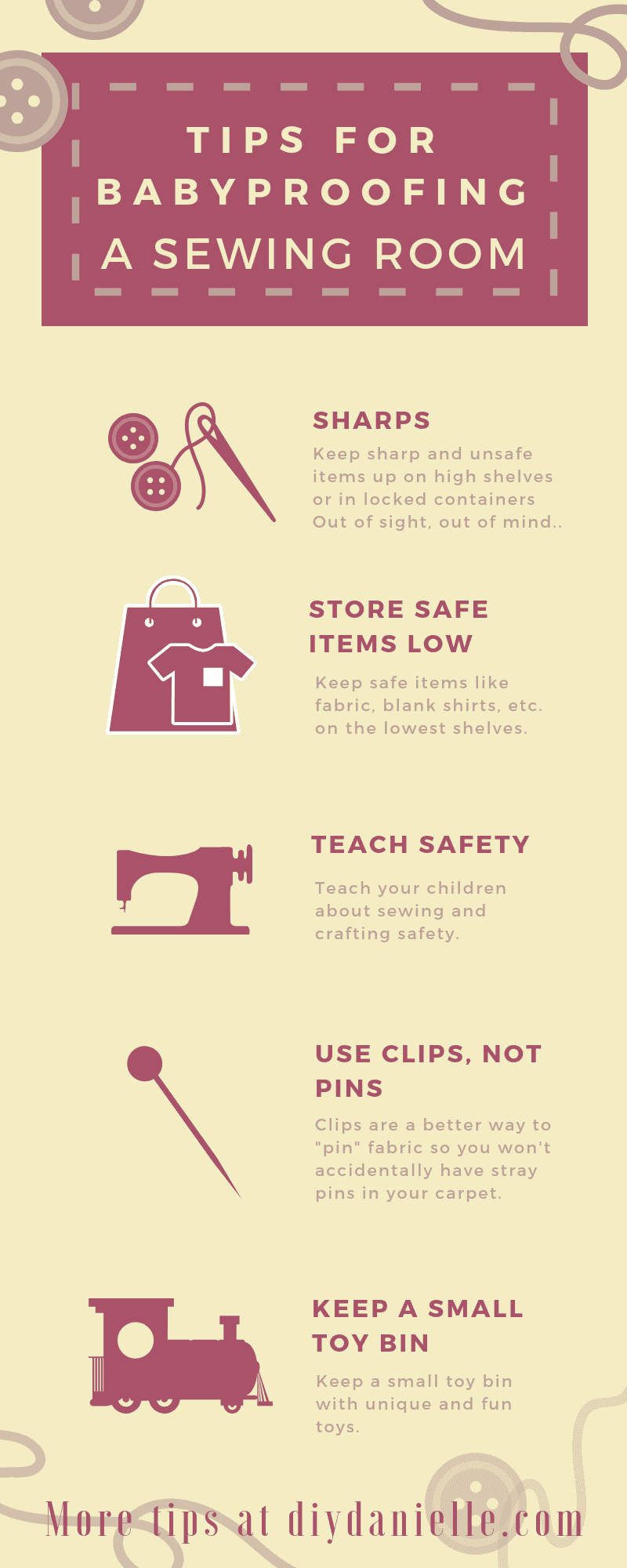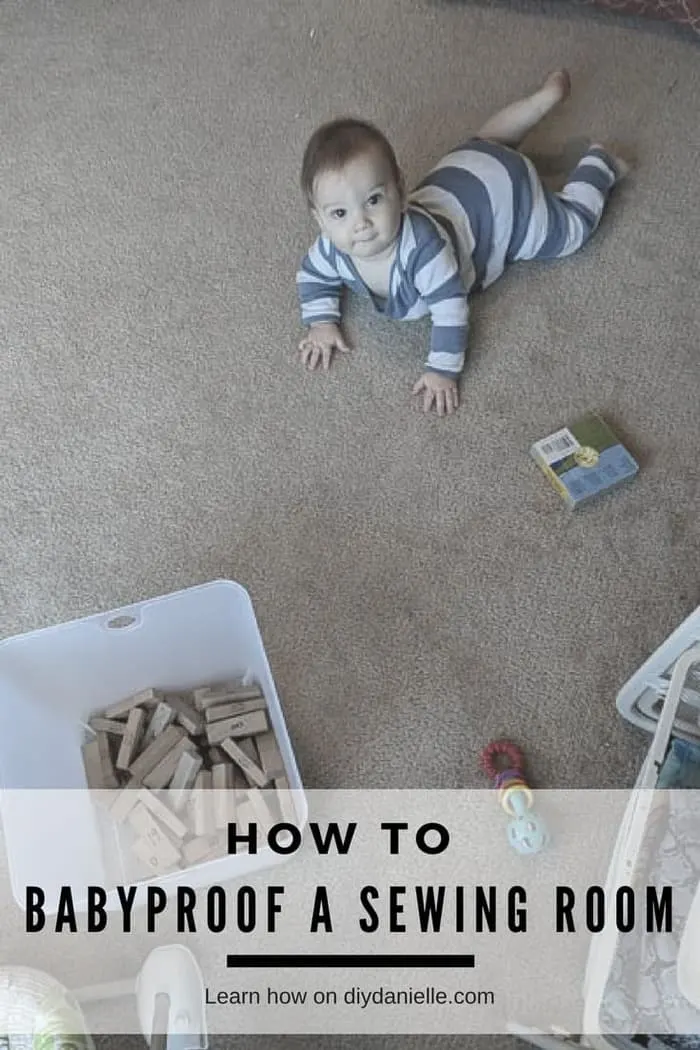How to babyproof a sewing room. Tips for keeping your sewing room safe with babies and toddlers.
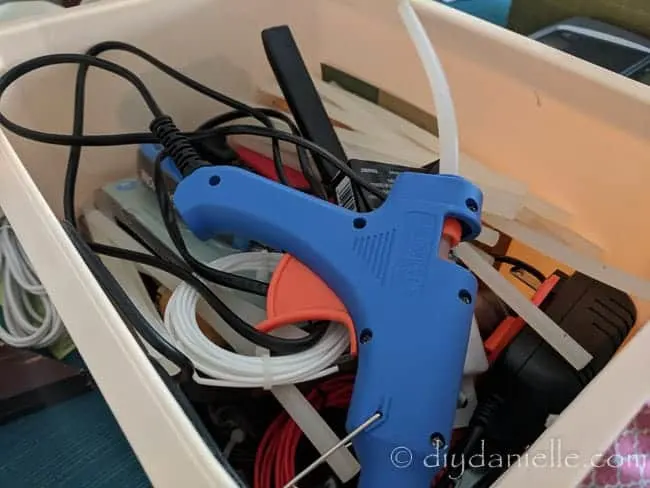
This post may contain affiliate links. Using these links helps support my blog. Thank you!
Babyproofing a sewing room may be one of the greatest challenges a sewist has because you want your supplies to be convenient, but you also want to be able to work safely with your baby or toddler nearby. It’s easy to get in the groove and leave something sharp out, or to miss when they tip over your craft drawer full of paint.
Needless to say, making your sewing area safe for baby is really important. My first son loved to climb up chairs and onto desks to reach things he shouldn’t so I had to put my home on lock down.
In terms of parenting so your child won’t touch off-limit items, I think it’s tough to teach that and rely on it for safety until kids are a little older. Compare it to letting a child walk alone through a parking lot. You teach safety rules about parking lots from the time they can walk until you can absolutely trust them to pay attention.
I currently trust my 4 and 6 year old to go into my sewing room and not touch things they shouldn’t. But I taught them these safety rules starting from the time they could walk. The rule is that they shouldn’t be in there without me unless I send them in to fetch something.
But I still have my room organized in a way that if I sent them in, they won’t trip over a cord for a hot iron and have it fall on them.
If I let them play in there while I sew, they’re expected to clean up their own messes. They have special toys and items in there that they are allowed to play with while I work.
And I explain to them some of my mistakes sewing and injuries I’ve gotten as a result.
Now with a baby around, I needed to revisit babyproofing the sewing room so I wanted to share with you some of the things I do to make it safer.
Keeping Kids OUT of the Sewing Room
You need to be able to control when and if your kids go into your sewing room. If you can supervise, you can run interference if necessary. If you don’t know they’re in there, ANYTHING could happen. Some of which is dangerous and some of which is just AWFUL to cleanup.
Here are a few ways to keep kids out out of your sewing room.
- Door handle cover (prevention): This one is the only brand that my first son didn’t hack. Most adults can’t figure it out either. My son is 6 now and he can finally open it successfully, but at this point he knows the rules and boundaries.
- Door alarm (warning): This is an alarm that I purchased for our sliding glass door because my oldest let himself out a few times. If you have it on and it’s up high enough that they can’t turn it off, it makes a very loud alarm when the door opens. This was a deterrent to my sons wanting to open the door, but if they decided to do it anyways, I was able to hear it and come running.
- Baby gate: Baby gates are a nice option because you can leave kiddo on the other side (hopefully with someone else watching them) while you sew and you can still keep an eye out. Nobody can sneak up on you while your spouse isn’t looking.
- Locked Door: Keep the door closed and locked.
Feel free to use more than one method if you have particularly adventurous children.
Teach Sewing Safety
I’m sure some people will disagree, but I teach my children to use unsafe items early on. If I teach them how to iron, for example, they won’t get curious one day and try to do it themselves in an unsafe way. It takes some of the excitement out of it to do it with them, plus I can use it as a teaching opportunity. There are a lot of things to discuss about each step sewing, and safety is one of them.
My kids enjoy it because it’s time spent with mommy. They like to be helpers, particularly when they’re very young.
I want to quickly walk you through how I teach sewing safety with the ironing example. I will setup my iron and ironing board, as well as a chair for my son to stand on. Standing behind him, I’ll show him how the iron is plugged in and point out what parts are hot. I explain that we keep our right hand on the iron and our left hand high in the air when we iron. Then I put my hand over his, and iron with him. Usually I use it as a teaching opportunity to explain that we can’t leave the iron in one place, but need to move it around.
There are rules around this special time, however. If my children can’t be still when we’re learning something, then we put it down and come back to it another time. We never sew when we’re distracted, hyper, angry, or otherwise not concentrating. I explain that this is a safety issue to sew when we aren’t focused. Usually I’ll give them an opportunity to settle and continue.
This is a 1:1 activity so I only do this if my other two children are with daddy or napping.
Babyproofing a Sewing Room
Unfortunately, a sewing room will never be completely babyproofed. I’ve found that it’s too easy to make mistakes or leave things out. That’s why you need to be able to supervise while you’re in the sewing room with a young child. I usually tackle more mundane tasks when my kids are underfoot. I’ll apply snaps, cut our my pattern, or pick out fabric. It depends on how focused I think I can be during the process. Sometimes I have an opportunity to sew too. You can gauge your child’s (and your) mood.
But there are a few things you can do to make things safer to sew around kids.
Tricks for Making a Sewing Room Safer for Kids
STOP using pins if you let your children in the sewing room. Use Wonderclips instead. They work well for most projects and they won’t go through anyone’s foot if you drop one on the floor and don’t realize it. Pin accidents are really common with children. Also, stop putting pins in your mouth in front of your kids. They watch, they repeat. It’s not safe for grownups either.
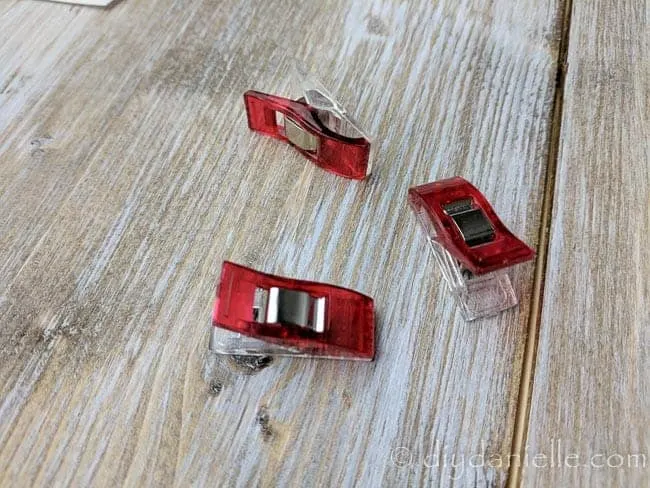
If you use pins, keep a good magnet handy. You can run the magnet over your floor to pick up any pins if you drop them.
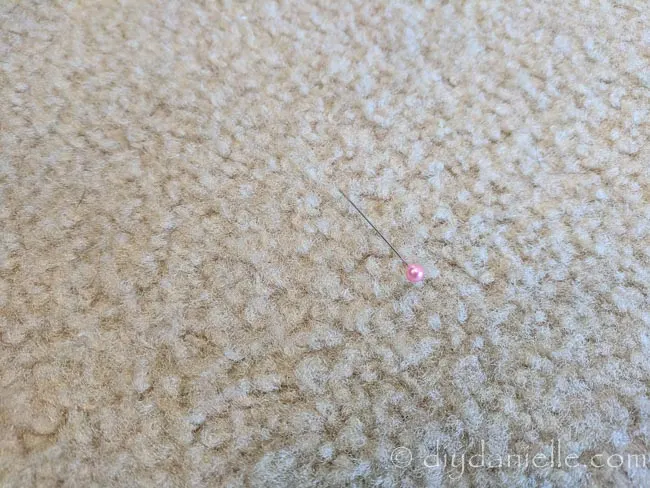
Make sure outlets are covered if necessary and furniture is mounted to the walls. This is really important if you have climbers like I do.
Be safe with your iron. Here’s how I setup my iron so nobody can trip over the cord or pull the cord (and iron) onto themselves. The ironing center sits on top of my IKEA shelves so it’s about chest height for me. This makes it fairly high for the kids to climb to (nobody has) and still accessible for me. The cord for the iron goes behind the shelves (along the wall) and the outlet is behind the drawers. When I want to use the iron, I can pull a drawer out to plug the iron in.

Drawer in place so the kids can’t see the outlet or iron cord.

Drawer out so I can easily access the outlet to plug in my iron.
Put paints and glues out of the way. I have some heavy duty glues that would be dreadful if a child got into it. I keep those up high.
Also store items like glue guns, wood burners, etc. out of a child’s reach.
Safe items like fabric are placed on lower shelves.
A pegboard on the wall is a good place to hang sharper items like rotary cutters or scissors. My sharps are hung at about my eye height.
Make an ironing center that is high up in lieu of an ironing board. My ironing center is at my chest height.
Keep kids away from sewing machine pedals. If you’re sewing and they push the pedal, your fingers are at risk.
Store broken needles in an old medicine container with a label and babyproof lid.
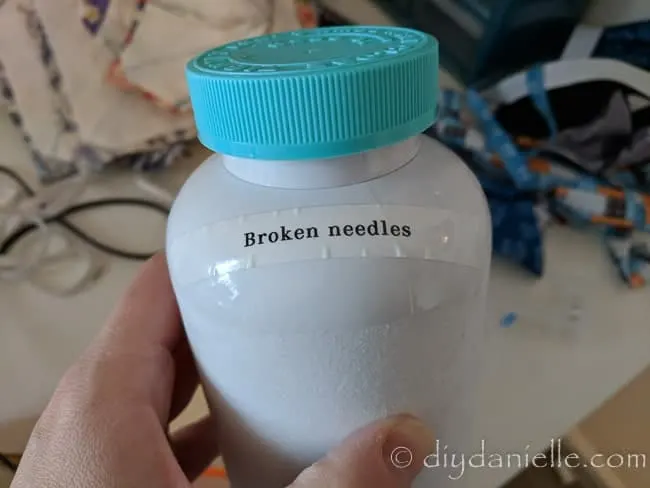
Tips to Keep a Child Occupied While You Sew
Babies
- I keep some age appropriate toys for baby in my sewing room. It’s ideal if I can hear the toy because then I can turn away for a moment and hear that they’re still playing with toys- and not something else.
- Use a playpen, swing, or some type of stable baby seat. Make sure they can’t reach any cords or dangerous items from that seat.
Toddlers
- Get a small toy pizza cutter and let them use their ‘rotary cutter’ on scraps of fabric while you cut.
- Keep a set of child safe scissors in the room and give the child some scrap paper to cut. I use the scraps from cutting out PDF patterns, but old magazines and junk mail work too. They can make confetti, cut out pretty pictures, or you can give them a hole punch to make little bits of things. Some people use dried tree leaves to make ecofriendly confetti (plus you can toss it around outside after and not need to pick it up).
- A small plastic fishbowl in my sewing room holds a bunch of pom poms that the kids can organize by color.
- Create a sensory bin with fabric scraps and small toys or buttons.
- Bingo wands and chips make for fun sensory play.
- You can create a small ‘learn to sew’ kit for the kids too. My middle son was able to use this around 3 years old, but my 6 year old is better at understanding what to do.
- I also let the older kids play with my button collection when I sew.
The main thing to remember is that you are not guaranteed sewing time unless someone else is watching your children for you. I find it helpful to go in with the mentality that I may or may not get anything done.
